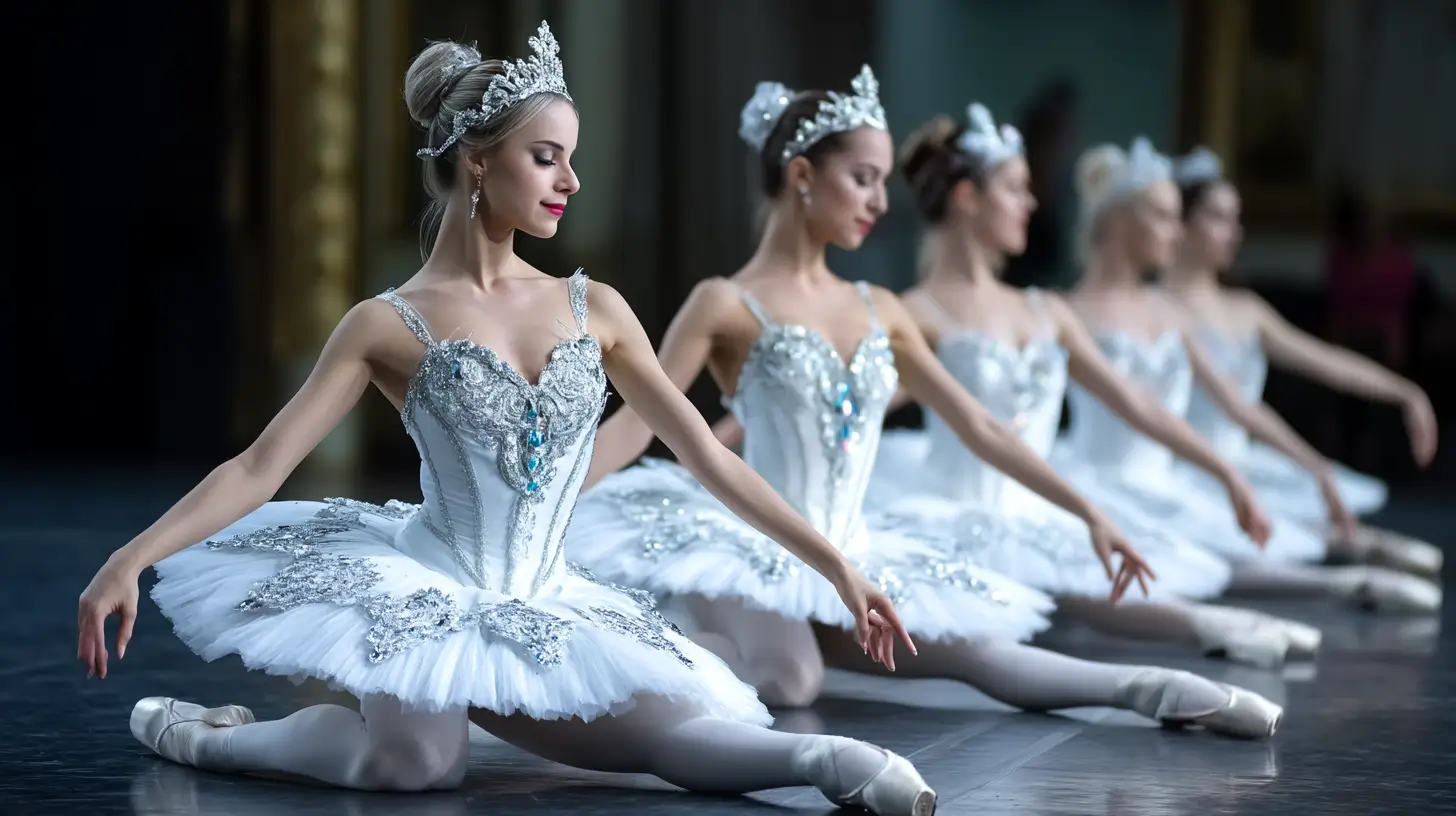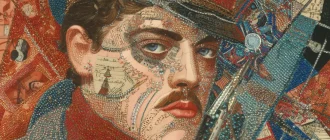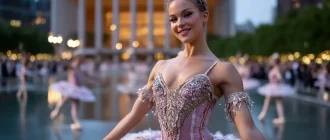Scottish Ballet is Scotland’s national dance company, known for its innovative blend of classical and contemporary ballet. The company has become a significant cultural institution, founded in 1969 by Peter Darrell and Elizabeth West. This Scottish Ballet overview will explore its history, diverse repertoire, Glasgow headquarters, and ongoing commitment to community outreach. The company offers various programme initiatives to provide world-class dance performances and educational activities.
Graceful Insights
- Scottish Ballet, established in 1969 by Peter Darrell and Elizabeth West, has evolved from Scottish Theatre Ballet to a national institution, showcasing a blend of classical and contemporary ballet.
- Under the leadership of Christopher Hampson since 2012, Scottish Ballet has modernized its repertoire, increased opportunities for female choreographers, and prioritized educational outreach and community engagement. The company is committed to providing community learning and artistic programs yearly.
- The company is committed to inclusivity and accessibility in the arts, implementing programs that serve diverse audiences and emphasize the integration of dance with health and well-being.
Art de Podcast
| Aspect | Details |
|---|---|
| Founded | 1957 as Western Theatre Ballet in Bristol by Peter Darrell and Elizabeth West; relocated to Glasgow in 1969, becoming Scottish Theatre Ballet, and renamed Scottish Ballet in 1974. |
| Headquarters | Tramway Arts Centre, Glasgow (since 2009). |
| Artistic Director | Christopher Hampson (since 2012). |
| Mission | To inspire on stage and beyond, showcasing Scotland’s creativity and bringing ballet to the widest possible audience. |
| Vision | Creating a future where anyone can move or be moved. |
| Core Values | Excellence, Inclusion, Innovation. |
| Repertoire | A blend of classical and contemporary works, including reinterpretations of classics like The Nutcracker and Cinderella, and collaborations with choreographers such as George Balanchine, William Forsythe, and Ashley Page. |
| Education & Outreach | Offers programs like the Associate Programme, BA Modern Ballet degree (in partnership with the Royal Conservatoire of Scotland), and community initiatives for diverse groups, including those with Parkinson’s or dementia. |
| Innovations | First UK dance company to provide live audio-description for visually impaired audiences; launched the unique MMus (Piano for Dance) degree; employs intimacy coaches; and actively supports female choreographers. |
| Touring | Performs across Scotland, the UK, and internationally, including tours to China, Hong Kong, Malaysia, Portugal, and Ireland. |
| Recent Productions | The Crucible, Mary, Queen of Scots, A Streetcar Named Desire. |
| Legal Status | Private company limited by guarantee without share capital; registered charity in Scotland. |
Introduction to Scotland’s National Dance Company
Scottish Ballet stands proudly as Scotland’s national dance company, dedicated to creating and performing high-quality dance productions that showcase the art form of ballet. With a foundation built on strong classical technique and a relentless commitment to innovation, Scottish Ballet has firmly established itself as one of the leading ballet companies in the UK.
The company’s repertoire is a rich tapestry of classics and contemporary works. Audiences can delight in timeless productions like The Nutcracker and Cinderella, which are brought to life with technical precision and dramatic intensity. Additionally, Scottish Ballet continually pushes the boundaries of ballet by commissioning new works from living choreographers such as David Dawson and Annabelle Lopez Ochoa. These modern pieces add a fresh and dynamic dimension to the company’s offerings.
Scottish Ballet’s performances are renowned for their musicality and emotional depth, making them a must-see for audiences of all ages. As Scotland’s national dance company, Scottish Ballet is deeply committed to making dance accessible to everyone, regardless of age, ability, or background. This dedication ensures that the magic of ballet can be experienced and enjoyed by a diverse and inclusive audience.
The Origins of Scottish Ballet
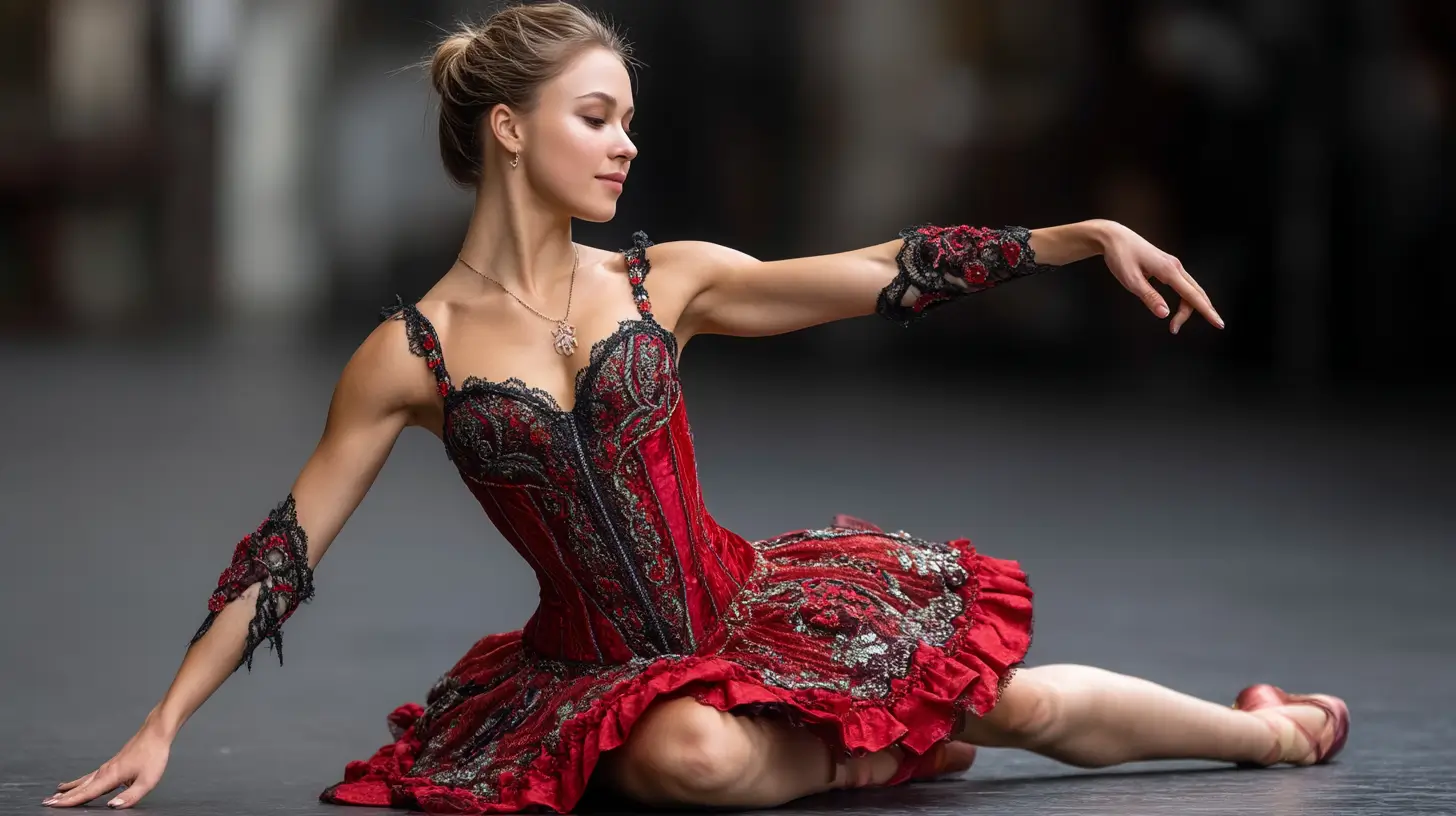
Scottish Ballet was born out of a vision shared by Peter Darrell and Elizabeth West in 1969, marking the beginning of a new era in Scotland’s dance landscape. Initially known as Scottish Theatre Ballet, the company laid its foundations on innovation and artistic excellence. The founders’ pioneering spirit and dedication to the art form set the stage for what would become a national institution.
Peter Darrell, a pivotal figure in the development of modern ballet in Scotland, played a crucial role in shaping the company’s artistic direction. His choreographic brilliance and commitment to nurturing talent were instrumental in establishing Scottish Ballet as a formidable presence in the dance world. Under his leadership, the company began to earn recognition for its unique blend of classical and contemporary ballet.
1974 the company underwent a significant transformation, changing its name to Scottish Ballet. This rebranding marked a new chapter, reflecting its evolving identity and aspirations. The name change signified a broader vision, aligning the company with the rich cultural heritage of Scotland and setting the stage for decades of artistic innovation and excellence. The company also experienced a notable event in June 2009, when it relocated, further cementing its place in the history of Scottish arts.
Repertoire and Performances
Scottish Ballet’s repertoire is a testament to its commitment to artistic diversity and excellence. The company has a rich collection of new versions of classics, 20th-century modern ballet pieces, and innovative works by living choreographers. This eclectic mix ensures that audiences are treated to various performances catering to traditional and contemporary tastes. The upcoming performances of ‘The Crucible’ in 2025, which previously received acclaim in London and the USA, are highly anticipated and add to the excitement surrounding Scottish Ballet’s offerings.
Renowned choreographers such as David Dawson, Annabelle Lopez Ochoa, and Helen Pickett have significantly contributed to Scottish Ballet’s repertoire with their new commissions and acclaimed works. Performances like ‘The Snow Queen’ showcase the company’s creative capabilities and ability to bring timeless stories to life with a fresh perspective. Additionally, innovative productions like Dickson Mbi’s ‘Twice-Born’ reflect the company’s willingness to explore new directions and push the boundaries of ballet.
Scottish Ballet also embraces the intersection of dance and film, as evidenced by ‘The Secret Theatre,’ directed by Jessica Wright and Morgann Runacre-Temple. This film exemplifies the company’s innovative approach to choreography, designed for cinematic performance. Scottish Ballet’s ongoing expansion of its repertoire and exploration of new artistic avenues keep audiences captivated and inspired by the magic of dance.
Headquarters in Glasgow’s Southside
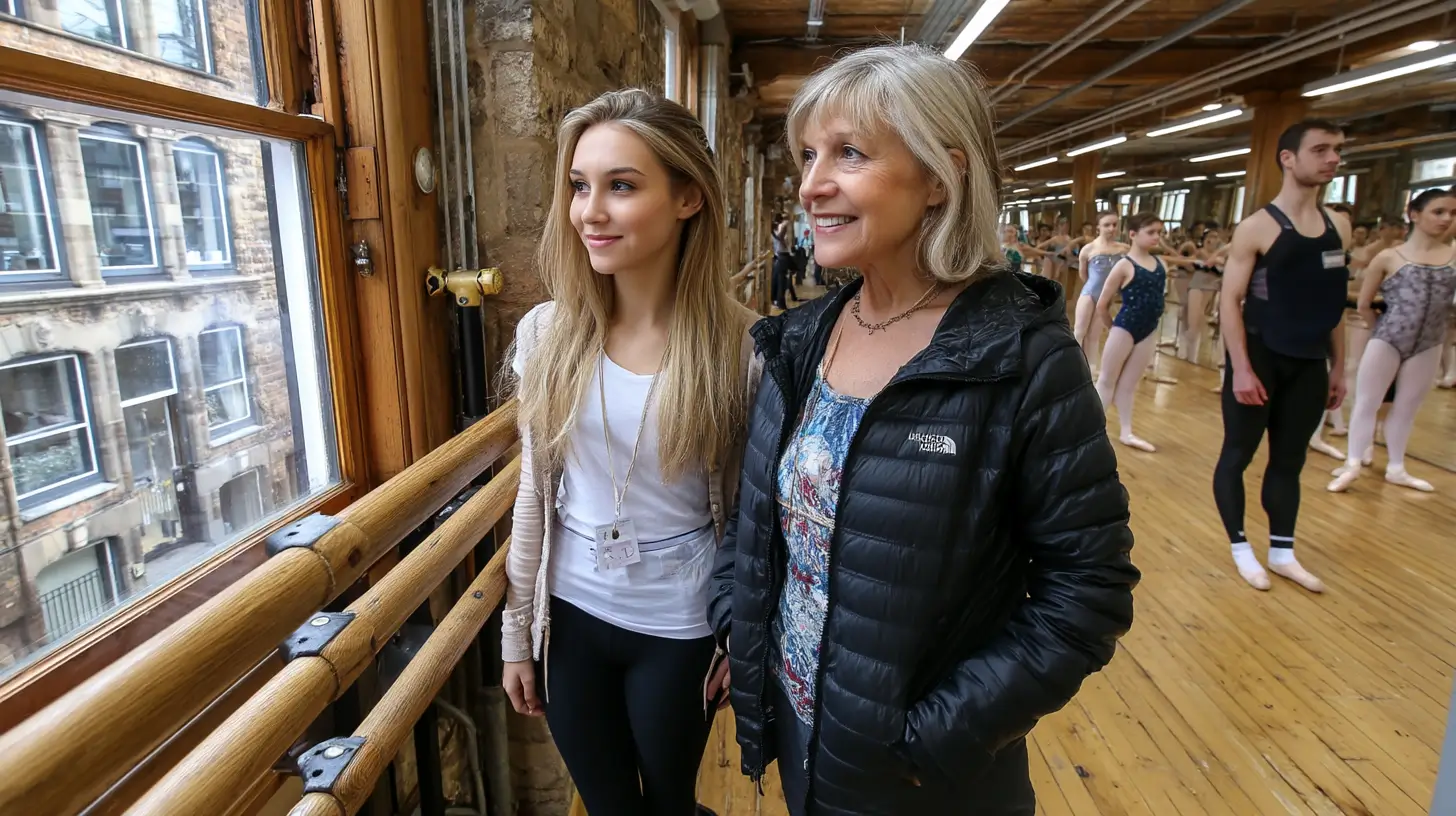
The heart of Scottish Ballet beats in its purpose-built ballet centre located at the Tramway Arts Centre in Glasgow’s Southside. Completed in 2009, this state-of-the-art facility has significantly enhanced the company’s operational capacity and artistic activities. The headquarters are not just a building but a hub of creativity and innovation where dancers, choreographers, and artists come together to create and rehearse groundbreaking performances.
Strategically positioned adjacent to the Tramway Theatre, the headquarters facilitate seamless collaboration and accessibility, fostering a vibrant artistic community based on this proximity. This proximity allows for easy integration of rehearsals and performances, creating a dynamic environment where creativity can flourish. The building’s architectural design and modern amenities further support the company’s mission to produce world-class dance information. The company also performs in various breathtaking settings within Edinburgh, such as the National Monument and Portobello Beach.
The Tramway Arts Centre itself, with its rich history and vibrant cultural scene, provides an inspiring backdrop for Scottish Ballet’s activities. This location in Glasgow’s Southside enhances the company’s visibility and reinforces its commitment to being an integral part of the local and national arts community. The headquarters are a testament to Scottish Ballet’s dedication to excellence and ongoing pursuit of artistic innovation.
Artistic Leadership
Since 2012, Christopher Hampson has been at the helm of Scottish Ballet, guiding the company with a visionary approach emphasizing modern interpretations of classic ballets. His leadership has been instrumental in modernizing the repertoire and enhancing the artistic vision of Scottish Ballet. Hampson’s direction focuses on engaging audiences with innovative storytelling and contemporary techniques that breathe new life into traditional ballet.
Hampson has also strongly advocated increasing opportunities for female choreographers within the company. This commitment to diversity and inclusion is reflected in the company’s repertoire, showcasing works by established and emerging female artists. Under his guidance, Scottish Ballet has collaborated with contemporary choreographers, diversifying its performances and enriching its artistic offerings. Users can choose their ad preferences and settings related to personalized ads on the company’s website.
Furthermore, Hampson has strongly emphasized dancers’ artistic development, encouraging them to explore new styles and techniques. This approach not only enhances the dancers’ skills but also contributes to the overall growth and evolution of the company. With Hampson’s visionary leadership, Scottish Ballet continues to push the art form’s boundaries, creating captivating performances that resonate with audiences worldwide.
Company Structure
Scottish Ballet is a charitable organization, registered with the Scottish Government and supported by various funding bodies. This structure ensures that the company can continue to thrive artistically and financially while fulfilling its mission to make dance accessible to all.
The company is guided by a board of directors, who oversee its strategic direction and financial management. Their leadership ensures that Scottish Ballet remains true to its vision and goals. Christopher Hampson, the artistic director, is at the helm of the artistic programming and creative vision. His innovative approach and dedication to excellence drive the company’s artistic endeavors.
Scottish Ballet boasts a team of experienced and talented staff, including dancers, musicians, and technical crew. This dedicated team works collaboratively to create and perform the company’s productions, ensuring that each performance is of the highest quality.
In addition to its internal team, Scottish Ballet has established a range of partnerships and collaborations with other arts organizations, schools, and community groups. These relationships are crucial in supporting the company’s mission to make dance accessible to everyone. By working together, they create opportunities for people of all ages and abilities to engage with the art of ballet, fostering a love for dance that transcends boundaries.
By maintaining a strong organizational structure and fostering collaborative partnerships, Scottish Ballet continues to create, support, and inspire through the transformative power of dance.
Educational and Community Programs
Scottish Ballet’s commitment to educational outreach and community engagement is evident through its various programs that foster a deeper connection between the company and the community. Under Christopher Hampson’s direction, the company has expanded its outreach efforts, bringing innovative performances and workshops to local communities. These initiatives promote the arts and inspire and empower individuals of all ages.
One of the standout programs is the Youth Exchange, which connects aspiring dancers aged 14 to 24, providing them opportunities to develop their skills and build meaningful connections over time. Additionally, the Safe to Be Me® program collaborates with schools to offer workshops that promote self-acceptance and respect through dance. This program allows students to create performances, fostering inclusivity and creative self-expression.
Scottish Ballet also runs the Hothouse program, offering choreographic training for youth aged 14 to 21. This initiative aims to inspire the next generation of choreographers, providing them with the tools and guidance to explore their creative potential. The Safe to Be Me® Festival, held in 2021, attracted over 2,000 participants, highlighting the program’s impact on promoting identity and acceptance.
Finally, the Healing Arts Scotland festival has seen over 11,000 attendees participating in arts and health activities, showcasing the positive impact of the arts on community well-being. Scottish Ballet is set to hold the first national Healing Arts activation in Scotland, further integrating arts with health and wellbeing across the country.
These programs collectively demonstrate Scottish Ballet’s dedication to making a lasting impact on individuals and communities through the power of dance.
Support and Partnerships
Scottish Ballet’s success is bolstered by a network of support and partnerships that enable the company to thrive artistically and financially. Government funding supports Scottish Ballet’s artistic endeavors and community engagement efforts. This financial backing ensures that the company can continue to produce world-class performances and expand its educational programs.
Corporate sponsors also provide significant support, helping to fund Scottish Ballet’s performances and outreach initiatives. This partnership is essential for sustaining the company’s operations and enhancing its programming. Individual donations further contribute to the company’s financial health, allowing Scottish Ballet to invest in new productions and innovative projects. Users can find more information on browser control at certain links on the company’s website.
In addition to financial support, Scottish Ballet collaborates with other arts organizations across Europe, fostering creative exchanges and broadening its artistic reach. These partnerships allow the company to remain at the forefront of the dance world, bringing fresh perspectives and new ideas to its repertoire. By leveraging these relationships, Scottish Ballet continues to inspire and engage audiences locally and internationally.
Inclusivity and Accessibility
Scottish Ballet is dedicated to fostering an inclusive environment that welcomes individuals of all backgrounds and abilities. The company has developed initiatives to create a supportive and accepting culture for LGBTQ friendly individuals. These efforts promote a sense of belonging and ensure everyone feels valued in the Scottish Ballet community.
Scottish Ballet actively engages in programs that make performances accessible for people with various abilities. These initiatives include providing accessible venues, offering audio-described performances for the visually impaired, and ensuring that facilities cater to the needs of all audience members. By prioritizing inclusivity and accessibility, Scottish Ballet ensures everyone can enjoy its performances, regardless of their abilities or backgrounds.
Through these efforts, Scottish Ballet enriches the cultural landscape and sets an example for other arts organizations. The company’s commitment to inclusivity and accessibility reflects broader societal changes and underscores the importance of making the arts accessible to all.
Key Figures in Scottish Ballet’s History

Scottish Ballet’s history is marked by the contributions of key figures who have shaped its legacy. One such figure is Madeline Squire, who became one of the first female dancers to portray Drosselmeyer in The Nutcracker, a role traditionally held by males. Her groundbreaking performance challenged traditional gender roles in ballet and highlighted Scottish Ballet’s commitment to innovation and inclusivity.
These key figures have played a vital role in the company’s evolution, helping to establish Scottish Ballet as a leading force in the dance world. Their story features and contributions inspire future generations of dancers and choreographers, ensuring that Scottish Ballet remains at the forefront of artistic research excellence.
Impact on Scotland’s Cultural Scene
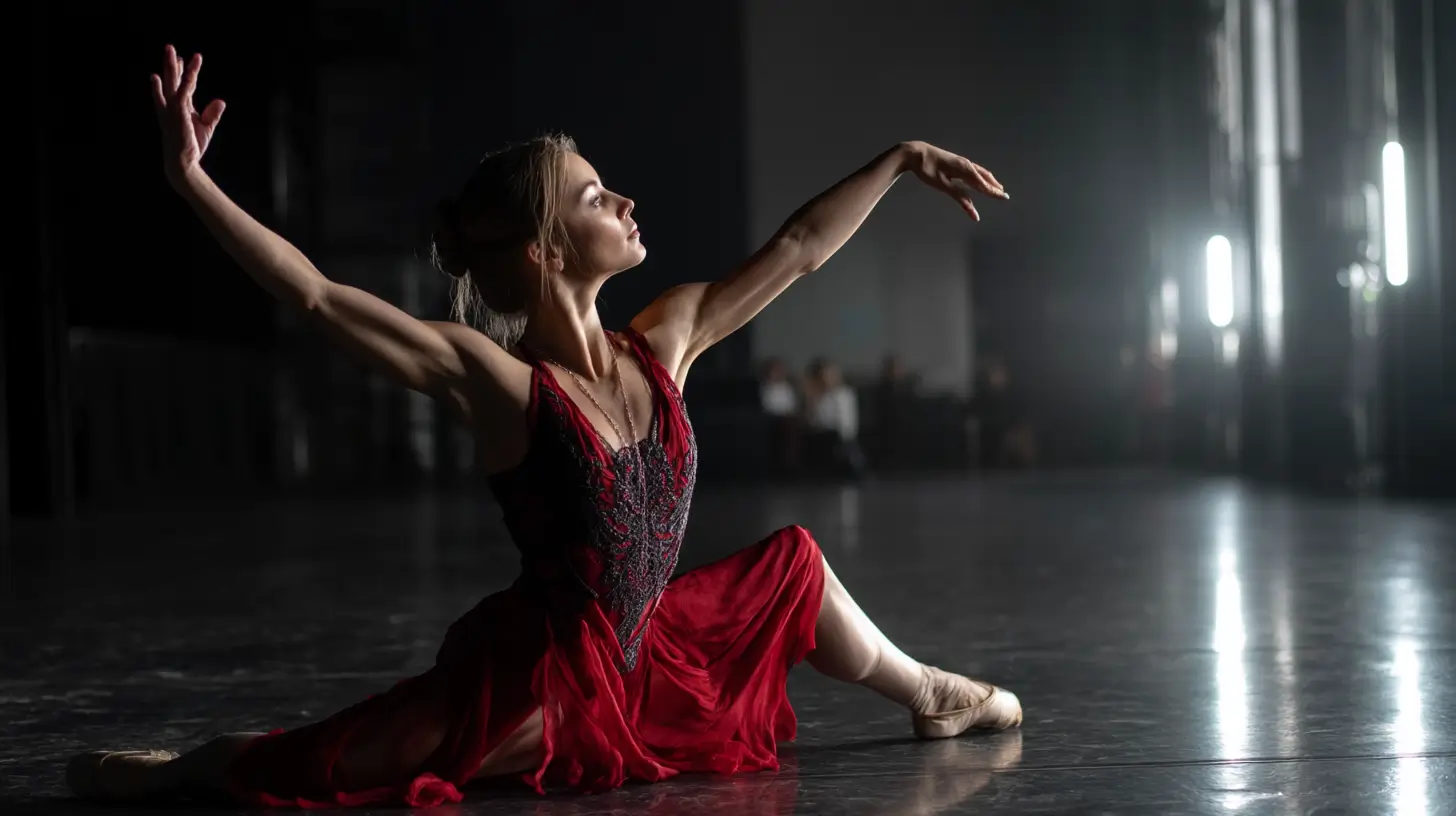
Scottish Ballet is crucial in enhancing Scotland’s cultural identity by presenting innovative performances that resonate with local and international audiences. The company’s commitment to artistic excellence and diversity has significantly contributed to Scotland’s reputation in the global arts community. By showcasing the country’s talent internationally, Scottish Ballet helps elevate Scotland’s cultural profile.
The company’s productions reflect broader societal changes, promoting inclusivity and diversity on and off the stage. Through collaborations with diverse communities and artists, Scottish Ballet enriches Scotland’s cultural landscape and fosters a sense of belonging. These efforts enhance audience engagement and contribute to a more inclusive and vibrant arts scene.
Scottish Ballet’s impact extends beyond its artistic achievements, influencing cultural policies and inspiring other arts organizations to prioritize inclusivity and accessibility. Scottish Ballet’s efforts to push the art form’s boundaries ensure its legacy will endure for generations.
Future Directions

Looking ahead, Scottish Ballet aims to continue its tradition of excellence and innovation. The company is committed to providing world-class dance performances and educational activities that inspire and engage audiences of all ages. Future performances, such as new adaptations of ‘The Snow Queen,’ are designed to captivate audiences with fresh interpretations and creative storytelling.
Scottish Ballet will also focus on expanding its educational programs at the Royal Conservatoire, offering more opportunities for young dancers and choreographers to develop their skills and pursue their artistic career dreams. By fostering a new generation of talent, the company ensures that its legacy of creative excellence will continue to thrive.
In addition to its artistic pursuits, Scottish Ballet is dedicated to exploring new ways to integrate the arts with health and wellbeing. Through initiatives like the Healing Arts activation, the company aims to improve the quality of life for individuals and communities across Scotland. By remaining at the forefront of innovation and inclusivity, Scottish Ballet is poised to impact the cultural landscape for years.
Resume
Scottish Ballet’s rich history, diverse repertoire, and commitment to inclusivity and community engagement make it a cornerstone of Scotland’s cultural identity. Under the visionary leadership of Christopher Hampson, the company continues to push the boundaries of the art form, creating captivating performances that resonate with audiences worldwide. As Scottish Ballet looks to the future, its dedication to artistic excellence and innovation ensures that it will remain a cherished cultural treasure for generations.
Frequently Asked Questions
When was Scottish Ballet established?
Scottish Ballet was established in 1969 by Peter Darrell and Elizabeth West.
What is the purpose of Scottish Ballet’s educational programs?
Scottish Ballet’s educational programs promote self-acceptance, respect, and creative self-expression through dance, fostering a strong connection between the company and the community.
Where is Scottish Ballet’s headquarters located?
Scottish Ballet’s headquarters are at the Tramway Arts Centre in Glasgow’s Southside.
Who is the current artistic director of Scottish Ballet?
The current artistic director of Scottish Ballet is Christopher Hampson, who has held the position since 2012.
How does Scottish Ballet promote inclusivity and accessibility?
Scottish Ballet actively promotes inclusivity and accessibility by implementing initiatives that support LGBTQ+ individuals and enhance opportunities for people with diverse abilities. This commitment helps create a welcoming environment for all audiences and participants.

